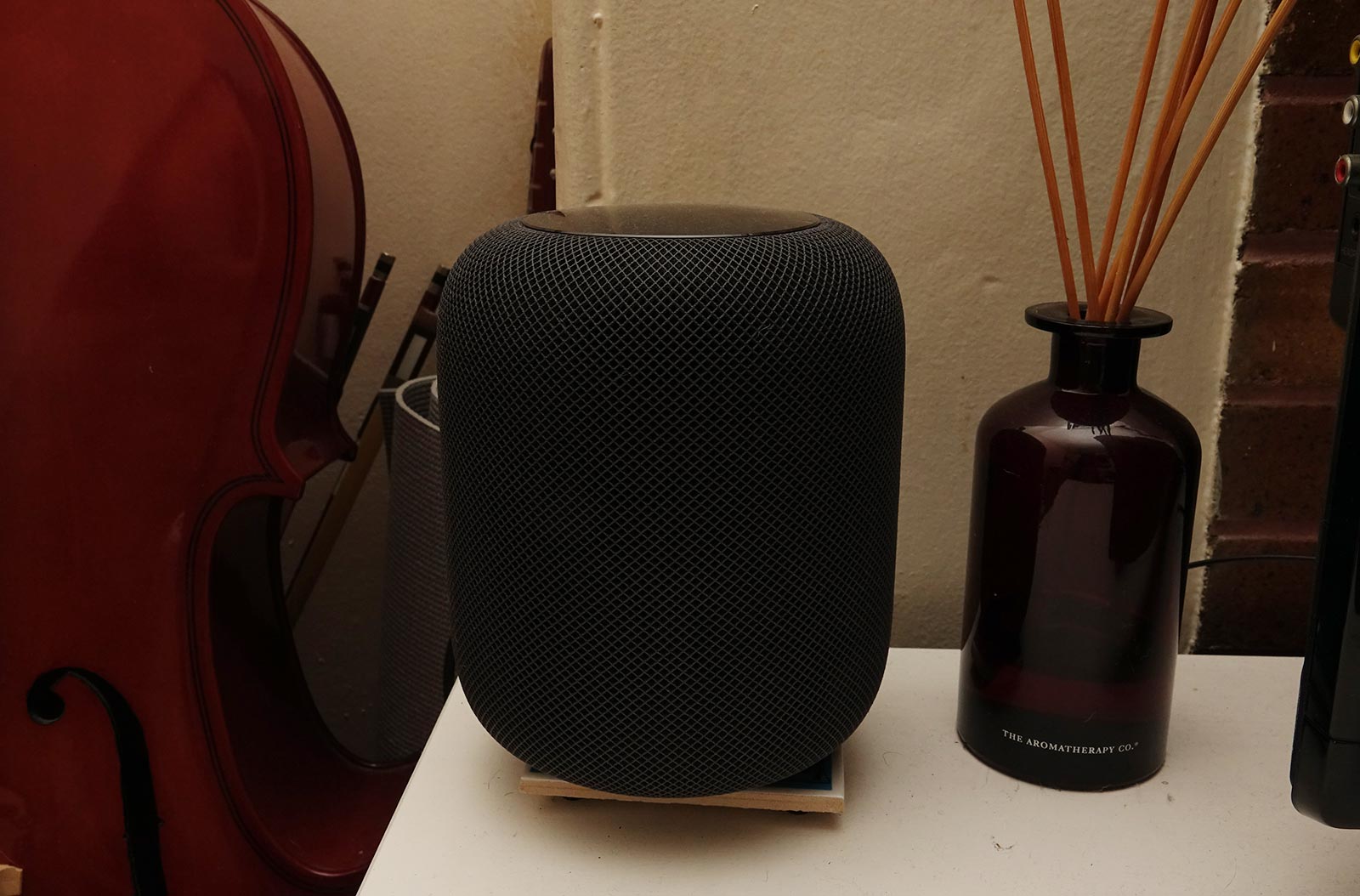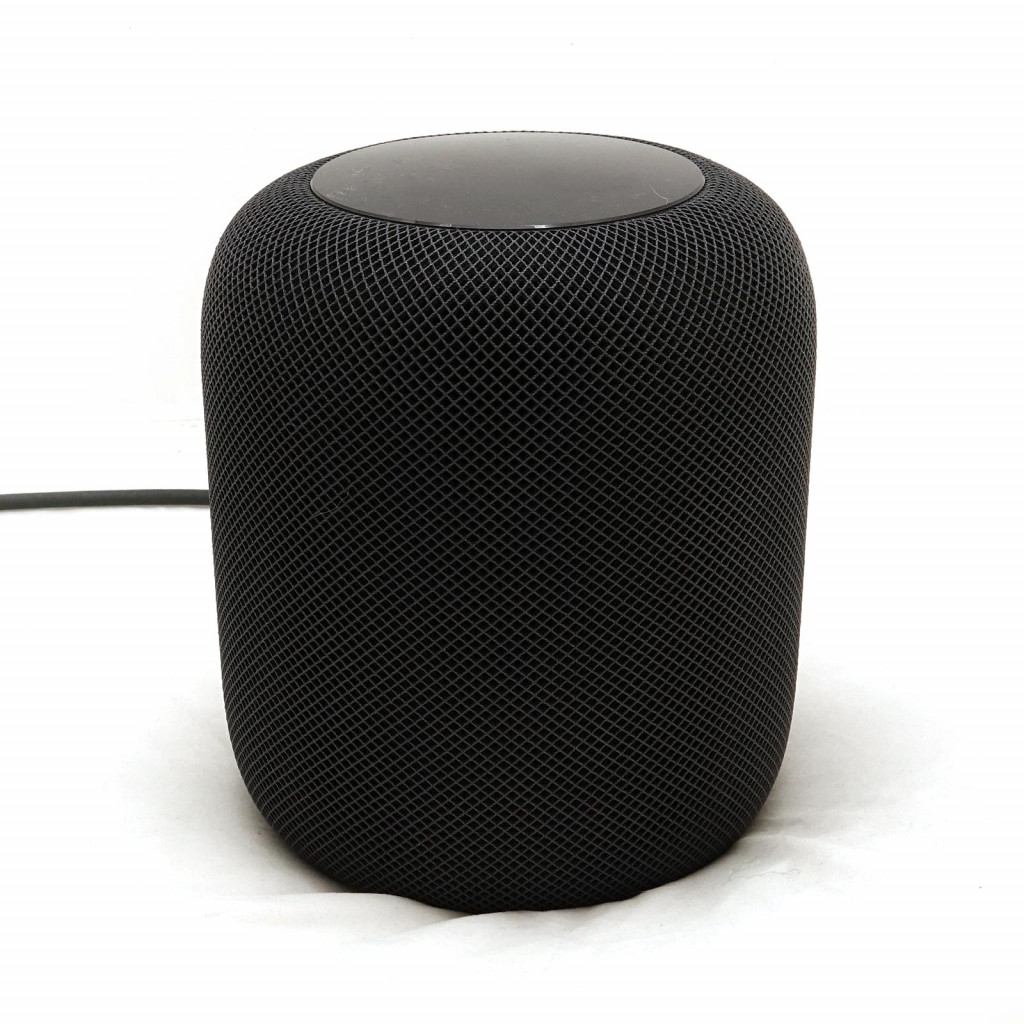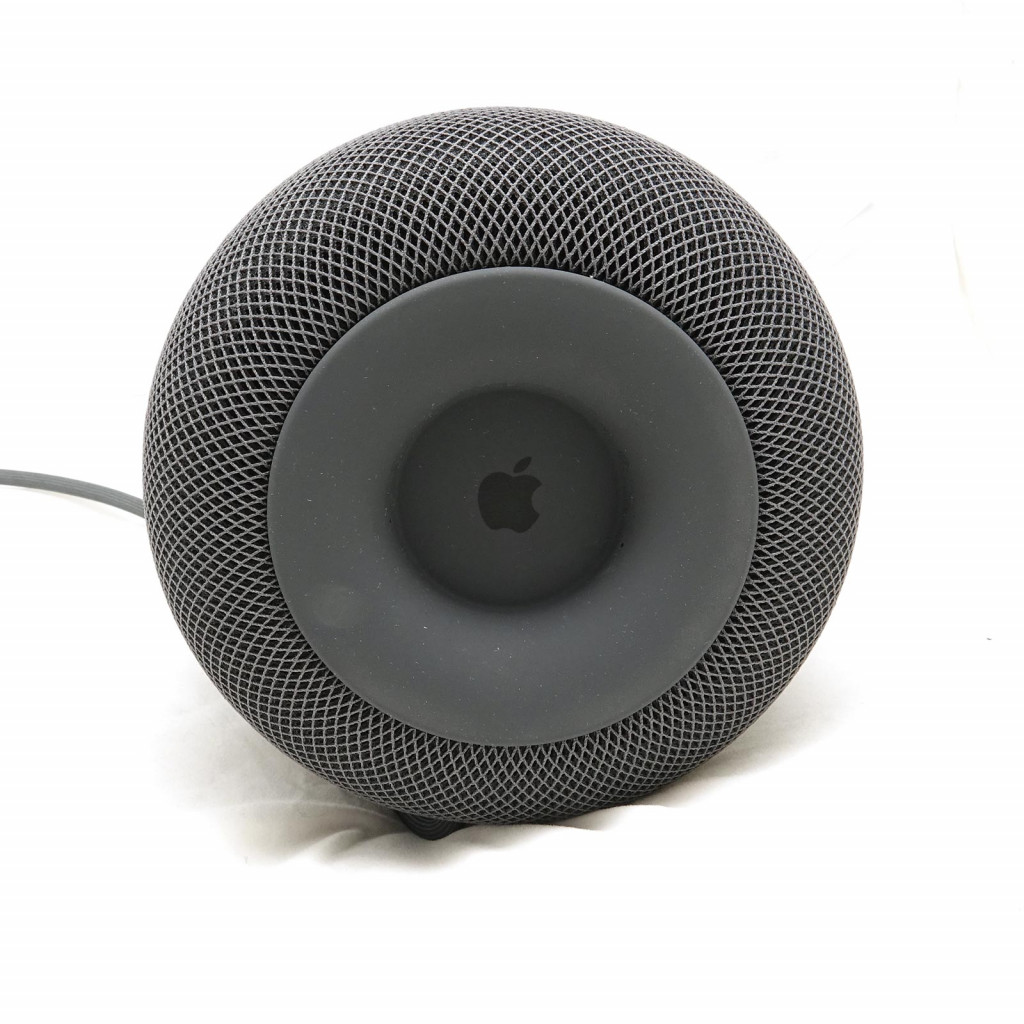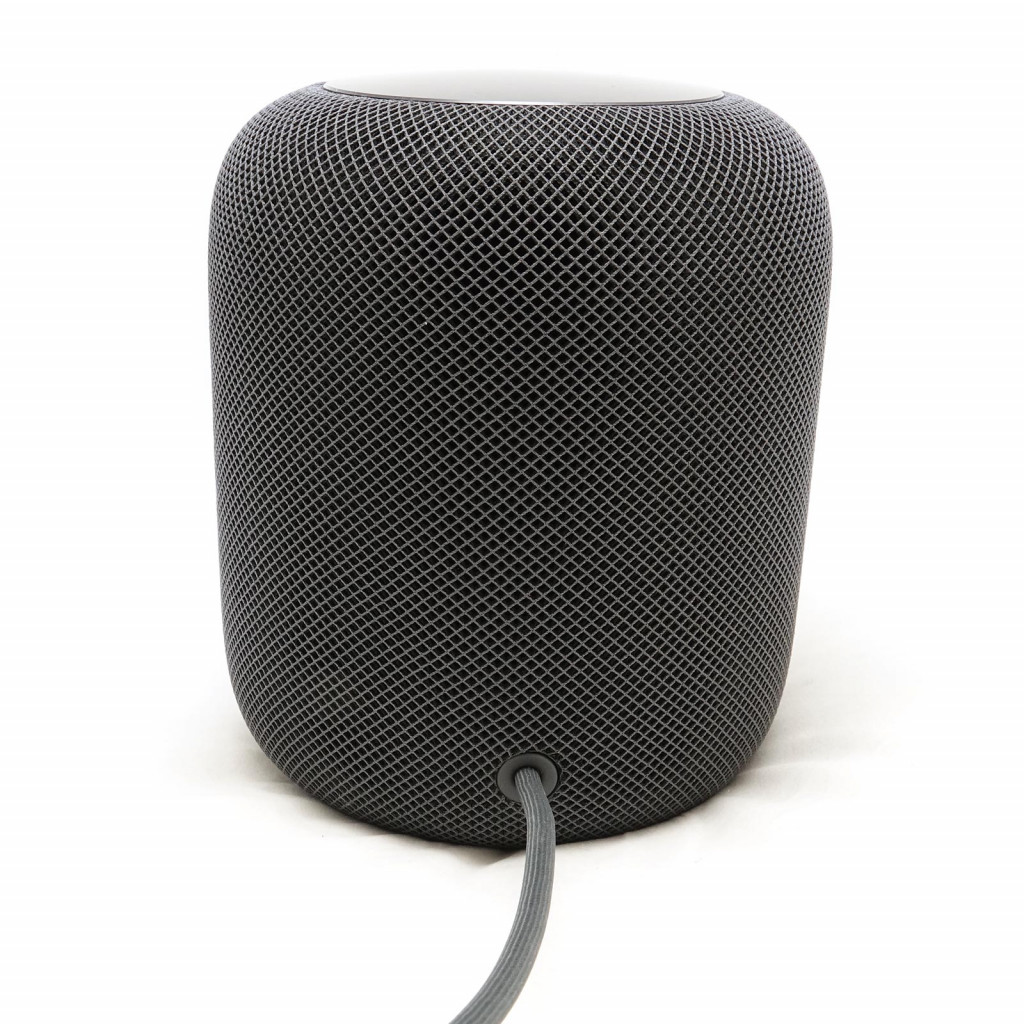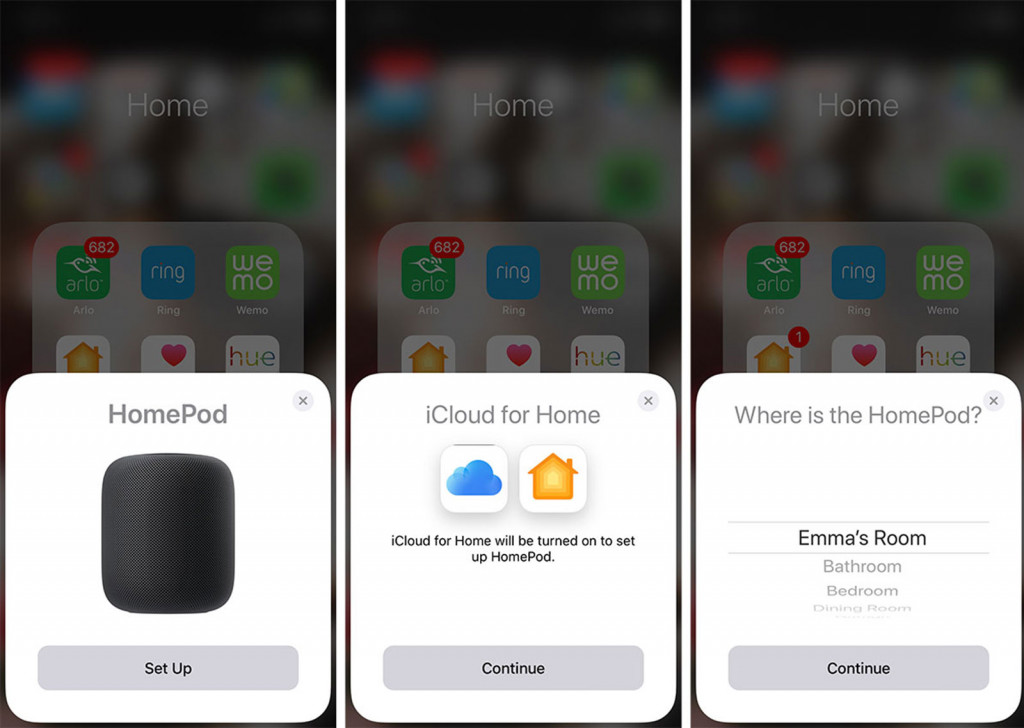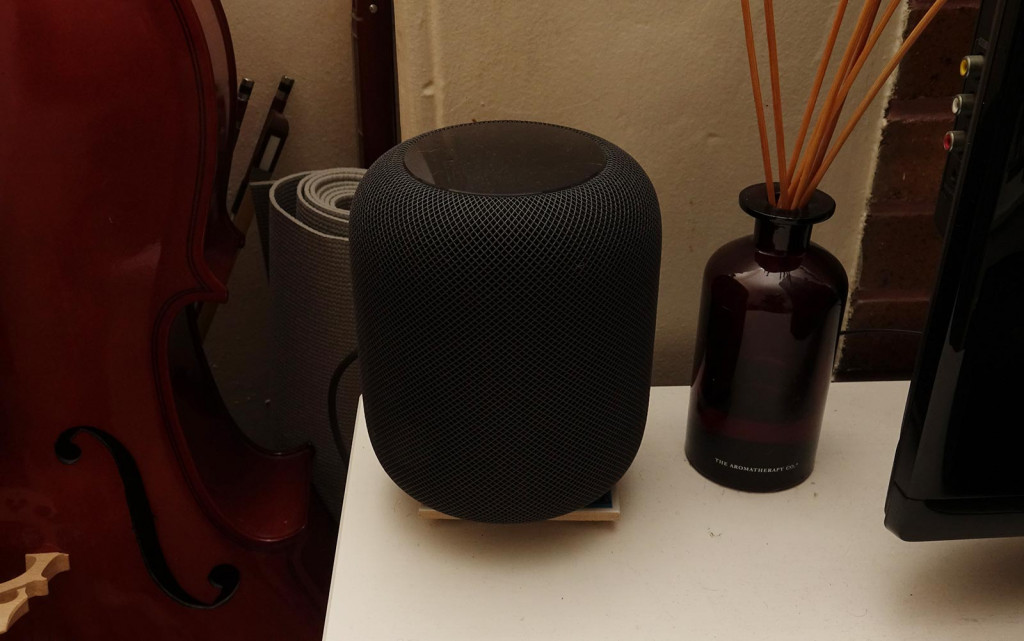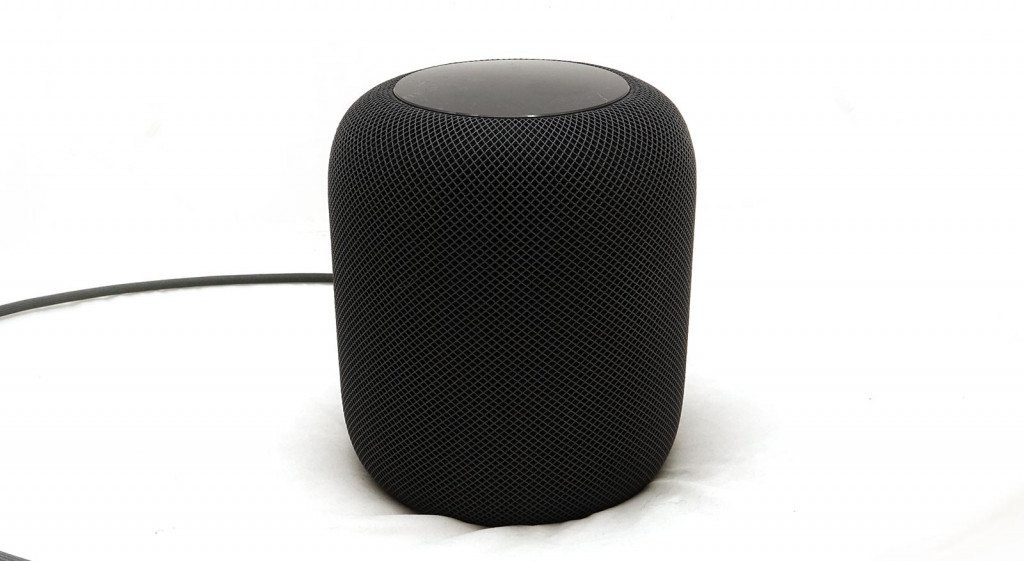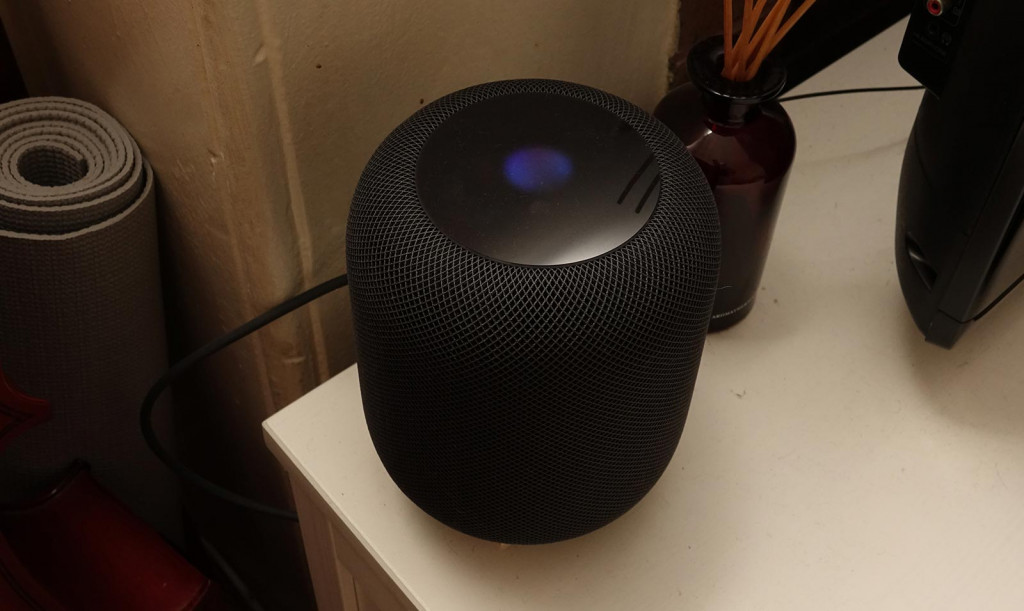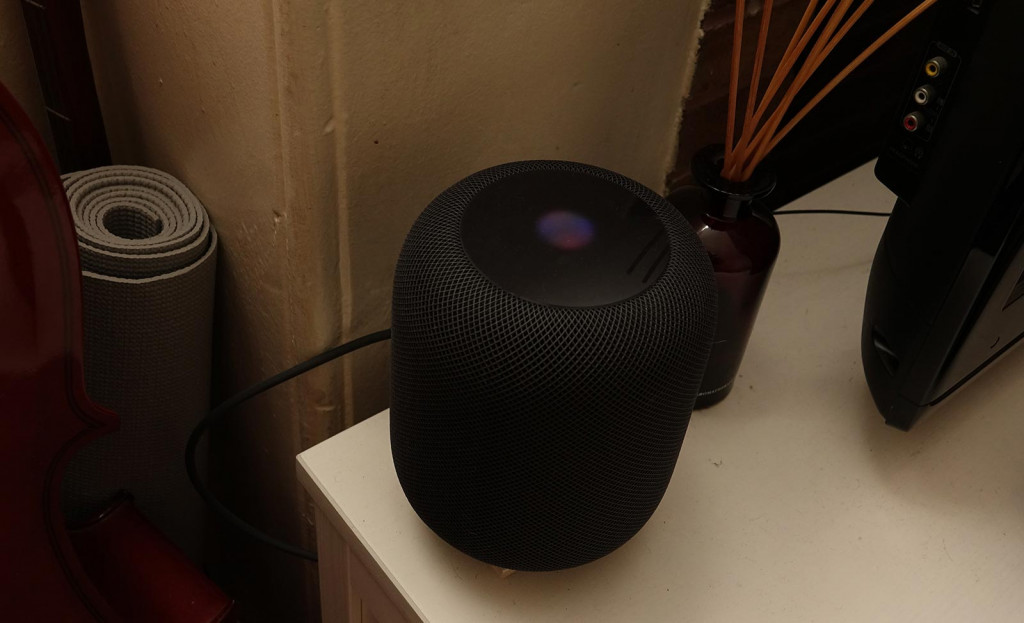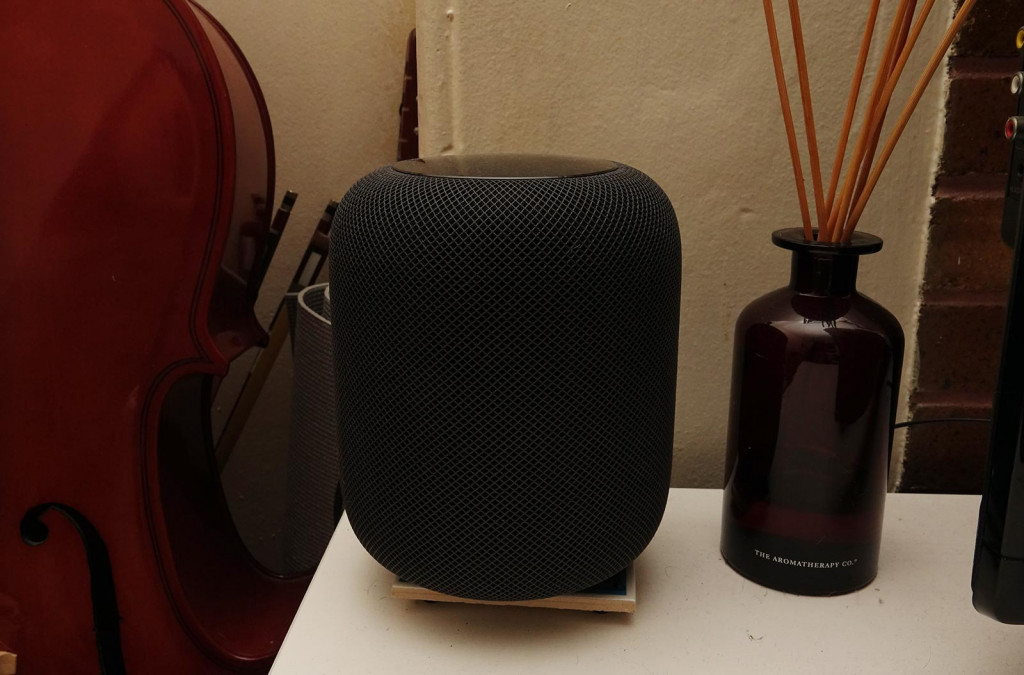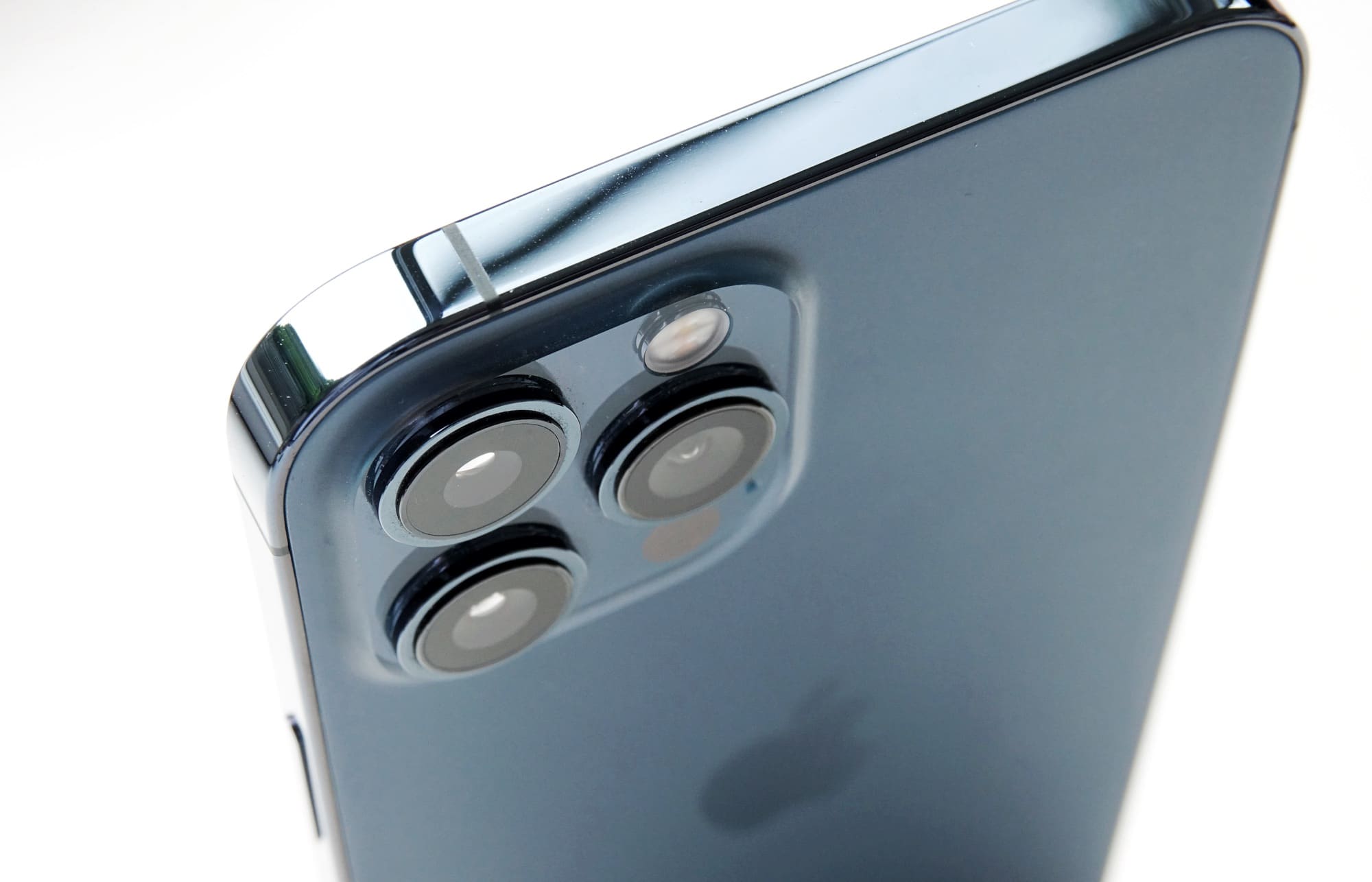Quick review
The good
The not-so-good
Apple’s HomePod is out, and we’re ready with our HomePod review, looking over Apple’s competitor to the smart speaker world with deep thought. Spend a few minutes, and you’ll fall in love, but is there more to the Apple HomePod than meets the eye?
You wake with a song, your heart begins to dance, and the moment you ask your little speaker “what’s the time”, you’re greeted with a friendly “It’s 7.52 AM, good morning.”
That’s just the beginning of a world with smart speakers, and it’s one that Apple’s HomePod sets iPhone owners up with, the squished cylindrical speaker already a favourite the moment you plug it in. Within seconds of setup, you’ll be grooving away to your tunes in a speaker designed with the same sort of attention to detail Apple applies to its phones, which is undoubtedly sharp, sophisticated, and solid work.
So is Apple’s HomePod the best of the smart speakers, or is its attention to detailed sound all the speaker has to offer?
Design and features
It wouldn’t be an Apple product if design didn’t feature prominently, and that’s a big part of what you can find in the HomePod, though for a nice change, it’s more about the internal design rather than the aesthetics of the outside.
On the outside, it’s just a bit of a tubby squished cylindrical bucket of a thing, coated in a nice mesh that makes it appear as if the entire thing is the speaker rather than having a dedicated speaker grill.
You’ll find a plug built into the body that you can’t remove, something that seems like it could have been designed a little better, but we’ll look past it for the moment.
Really, the inside is where things count for Apple, packing in a lot of technology into a package not much bigger than a Sonos One (or a Sonos Play:1).
In fact, this thing includes so much, it’s kind of surreal to hear about it, with seven tweeters, a high-excursion woofer, six microphones setup to not only look for your voice but also listen for the sound of the music, and an Apple A8 processor like out of the iPhone 6 to analyse the digital audio coming into the speaker.
Essentially, the HomePod is an advanced speaker that is constantly analysing the sound of what you’re listening to, and analysing the sound of the audio against the room.
In-use
In fact, the Apple HomePod isn’t just listening to what you’re listening to and analysing how to make it sound good in your home, but is also listening to the sound of your voice.
Thanks to that six microphone array, the Apple HomePod is looking for your voice, especially how it appears against the music, meaning you can shout, talk, or whisper “Hey Siri” to get its attention, and it will know you’re talking to it a good 90 percent of the time.
That’s not bad, especially for a first effort, and useful given voice is the primary way you control the Apple HomePod, calling out “Hey Siri” to see the colourful orb light up at the top of the HomePod, which is Siri’s way of saying “I’m ready to be given commands”.
Much like Google Home, you can tell it a whole bunch of things, such as asking Siri the weather, or what the news is, or to control various HomeKit-enabled smart devices in your home. There’s a massive list of things, and chances are if you’re already using Siri on your iPhone, iPad, or Mac, you’re already aware of quite a few.
Most of the time, however, you’re going to be telling HomePod to play music, though you do need an Apple Music connection to make this work.
On the plus side, setup is easy: hold your iPhone near the HomePod and the setup will auto start, connecting with your phone, copying settings across, and really doing all the legwork for you. It’s about as easy a setup as it gets, and exactly the sort of thing we like from modern technology.
Once that’s good, it’s down to you asking Siri to do things, always starting with “Hey Siri”.
For the most part, you’ll be saying “Hey Siri, play Michael Jackson’s ‘Thriller'”, which it will do, or “Hey Siri, make a station from John Mayer”, which it handles with no problems. You can even turn up the volume by saying “Hey Siri, turn up the volume”, or you can get a little more precise with “Hey Siri, make the volume 50 percent”. You can even ask about the song — “Hey Siri, tell me about this song” — and get Siri to fast forward a few seconds into the song — “Hey Siri, go 30 seconds into the song”. Siri will even bring up ABC’s news if you ask it nicely.
Mostly, HomePod is handled by that voice, and while it does a good job, it can make a bit of a mess of things. If that happens, be thankful there’s still a visual control for you.
In the Apple Music on your iPhone or iPad, you’ll see the icon at the bottom for finding other devices to play to. Press that, and you’ll see the HomePod in one of your rooms, allowing you to jump onto that device, and control it using Apple Music’s visual interface.
Performance
Using a speaker is one thing, but what good is a speaker if it doesn’t sound good, so let’s test that. As usual, all our testing is performed using the Pickr Sound Test, which you can always tune in and have a listen to for yourself, and it covers pretty much every major genre, starting with electronic, which shows the HomePod is already going to sound lovely.
In the first few minutes of listening to Balmorhea’s “Candor” and Ellie Goulding’s “Army”, we were treated to a lovely warmth and a massive sense of depth, with a strong showing from the bass as the woofer punched the sound hard, though not enough to vibrate the chamber with any unwanted buzz. There was detail across the highs and mids, too, and within the first few songs, we already had a firm idea of just what Apple wanted to do with this thing.
Almost like a page out of Beats’ marketing playbook (which Apple owns), the HomePod feels like it’s intending to make the music sound like the artist intended, with a speaker that doesn’t hold back punches, and really gets it, despite its size.
The Propellerheads’ “History Repeating” really showed what the HomePod was capable of, too, with an incredible sense of depth across the ranges, as the chip worked out where to fire extra background sounds, while Shirley Bassey’s rich voice came out in just the right spot over the warm and driven bass.
At the time, our notes read “it’s surreal to think there’s this much sound out of this little tubby box”, and reflecting on it, we stand by it.
R&B and soul continues that lovely push of sound, and Michael Jackson’s “Billie Jean” sounds utterly perfect, with no extra hum from that heightened bass-line the song is known for. In fact, we had to push the Apple HomePod harder just to see if 100 percent volume blew the bass out, and it did not.
While 100 percent doesn’t make the bass distort, you will be pleased to know that you rarely have to run the Apple HomePod at 100 percent. In fact, we found 50 percent was more than comfortably loud, with anything higher actually resembling properly loud to our ears. That’s good news, because is means it can drive volume in a room, leveraging the chip inside and working out where audio is going to make the best sound possible.
That is what’s going on inside, by the way, with that A8 iPhone 6 chip being made to do more work than your typical DAC. In fact, while it reads the audio — because this is a purely digital speaker — it is also comparing the waveform with what the six microphones are hearing, essentially working out where to place some of those sounds in the background, and where to drive the volume to the room.
A little accelerometer inside the speaker determines when it should measure the room (every time it’s moved), and it uses this through sound technology and its A6 chip to work out where the nearest wall is, working out in its 360 design where to put the “back” of the sound. That’s a little bit more than your conventional speaker, and it shows in complex sounds.
The overly engineered richness of pop offers a strong clarity and every instrument pegged in the right place, almost as if you were listening to a Dolby Atmos system, and makes us yearn for the ability to plug this into an Apple TV and run Atmos through it with 4K (it can’t, and we’re not sure if the Apple TV can either, at least not yet).
Really strong music acoustically, however, just reveals how utterly dynamite the Apple HomePod speaker is.
In rock, we found Beck’s “Dreams” just brought the HomePod to life, with lots of mids, highs, and a strength from the bass, all of which worked together brilliantly. Muse’s “Madness” was thick, rich, and earthy, and offered a solid separation between the warbling bass of the track and Matthew Bellamy’s lead vocals. The Deftones’ “Change (In the House of Flies)” showed a tremendous punch that felt like Chino Moreno was singing right in front of you, while Nirvana’s “Come As You Are” offered the raw strength you expect out of Kurt Cobain’s voice.
It’s much the same experience with jazz and classical, with a rich and lovely rendition from the modern interpretation of The Four Seasons by Nigel Kennedy, while Christian McBride’s duet with Regina Carter offers a beautifully recreated two instrument playback. In fact, it’s the same excellence in Dave Brubeck, in Miles Davis, and especially in the slick silence between the vocals of Kurt Elling and the instrumentation.
Simply put: the Apple HomePod is about as solid a speaker as it gets, and a pure delight.
Value
With a strong performance from the speaker, we’re not shocked that Apple has opted to price the HomePod at $499, well above similarly sized models from competitors.
In fact, the pricing is actually the highest of the smart speakers in this size, above its closest competitor in the Sonos One at $299, and even above the bigger Sonos Play:3, which in our tests, Apple appears to have a deeper sound against (though in fairness to Sonos, that speaker hasn’t been updated in years).
There’s no doubt that Apple’s HomePod has one of the best sounds of any of the smart speakers we’ve tested, and the performance is much more true to what the music should sound like than anything we’ve tested from Google, but is it worth the $499 price tag?
Our feeling is yes, though is comes with a caveat, because boy, there are some things Apple desperately needs to fix, or at the very least pay attention to.
What needs work?
There’s little doubt that Apple’s HomePod is one of the best speakers you can find for the home, producing a balanced sound the likes of which few manufacturers can match, and a bass level that just really transcends what a speaker of its size should be putting out.
But no one ever questions Apple’s commitment to quality, and it’s one area that Apple is totally fine in.
What it does need to work on, however, is the area of interface, because in a move completely unlike that of Apple, the way you use the HomePod feels like it needs some more testing and development of how you control the speaker.
Primarily, everything is handled via Siri, and you simply need to speak at the HomePod, starting with “Hey Siri” to get that little colourful orb to light up and do as you command.
That’s the theory, anyway, because we found flaws in how it performed.
“Hey Siri, make a Chopin radio station,” we would ask it, hoping to create a light classical piano station for our seven month old to sleep with at night. “I’m sorry, I can’t do that,” Siri would say back, eliciting the name response no matter how often we tried. This, despite “play some Chopin” working and resulting in a Chopin playlist, not a radio station. Oddly enough, we later found out that if you say his full name — Frédéric Chopin — Siri would make a radio station.
It’s these type of semantic flaws that show up with Siri, with the speaker unable to do the math and make the connections with what you need for every artist.
Apple’s HomePod is very good at working out that when you say “play Astronaut”, it knows you’re talking about that song by Mansionair that you’ve been listening to on repeat, and not say Simple Plan’s “Astronaut”.
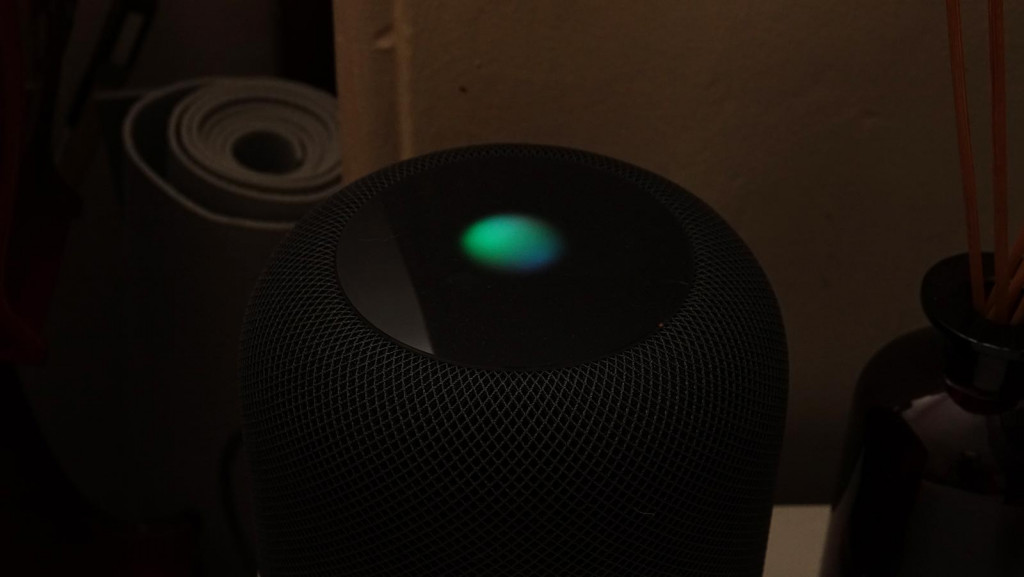
But it won’t always make the connection between artists you say, and it won’t always get the gist of what you’re trying to say. It took three tries to get Blackstreet’s “No Diggity”, the first of which loaded a completely unrelated progressive rock song, and the second of which had us play a jazz version. “Hey Siri, play ‘No Diggity'” didn’t end up doing what we wanted, but “Hey Siri, play Blackstreet’s ‘No Diggity'” did.
In fact, it managed to confuse Soul Rebels for “Star Wars” and didn’t understand our request for Dr Michael White, instead asking us if we wanted to subscribe to a completely unrelated podcast.
There were a few other songs the Apple HomePod struggled with, particularly those with profanity in the name, which Siri doesn’t like to say at all, continuing Apple’s persistence to remain censored and replacing the word with a censored bleep. Even in the comfort of your own home, even with explicit mode switched on, Siri can’t say some of the more adult words in your life, even if you can.
That means NWA’s “Fuck the Police” is returned back to you as “BLEEP the Police”, while both Dr Dre’s and Ben Folds’ “Bitches Ain’t Shit” is recited to listeners as “Bitches Ain’t BLEEP”. Good news, though, because it doesn’t censor the song, just the title, so that’s nice.
But hey, if you say “Hey Siri, play The Wrap”, it even manages to play Pickr’s podcast, so that’s positive.
Siri does exhibit crossover issues, though, because if you’re wearing an Apple Watch and happen to be in the same room as the Apple HomePod, and you ask the HomePod to call someone, your Watch will do it, but your HomePod will say it can’t. Despite there being a connection between the gadgets and knowing that you’re near each other — which it should be able to do with the Apple W1 and W2 wireless chips — the two devices don’t talk, and you’re left with crossover.
And yet despite this, HomePod will pick up on playing music files before the Apple Watch. It’s this sort of crossover that you find regularly, such as when you ask Siri to find a song on the HomePod, and it does it not only on your HomePod, but also on the Apple Watch and phone, and to different results.
For instance, asking Siri to find Ray Brown “Live at Starbucks” had our HomePod telling us it couldn’t find “Ray Brown Like Starbucks”, while the Apple Watch played a song by Ray J and Chris Brown (“Burn My Name”). Totally different results on totally different Apple devices.
It’s this bizarre crossover that constantly makes you wonder why several Apple devices on the same Apple Music account aren’t in fact talking to each other, even when they’re in the same room.
We’re sure it’s a teething issue, but it’s one of the many that affects the usability of what is an otherwise excellent speaker geared at people positively living inside the walls of an Apple ecosystem.
It’s already frustrating enough that the Apple HomePod forces you to control it using an Apple phone or tablet, a requirement of owning the device, even though the Apple Watch can’t. Adhering to the idea that an Apple iDevice owner would obviously have an Apple Music account, that is the only service the Apple HomePod supports, meaning if you have a Spotify account, too bad. The HomePod is clearly made for an Apple owner’s ecosystem, and yet it feels like Apple hasn’t taken stock of the things an iPhone owner might have in their life.
Later on, Apple’s HomePod will be able to use its AirPlay 2 technology to connect to more devices, and that’s great, because Sonos support is also apparently coming, great for those with an entire house filled with them. You’ll be able to slip this in and add to your collection, or even add a secondary HomePod for more sound, something the HomePod doesn’t yet support.
Oh, and there’s one other thing: don’t forget to use a coaster. For some reason, the design of the Apple HomePod is such that it leaves similar rings to cups when rested on wood, like when people don’t use coasters. Other materials should be fine, but if you’re leaving it on a wooden surface, you may find rings left behind, the sort your partner will likely scowl at you for.
It’s weird, because we’ve never come across a speaker that does this, and yet Apple’s HomePod does. There’s an easy solution: use a slim coaster, though make sure it’s slim. The HomePod should be rested on the surface, so having something come between it needs to be thin enough that it would mess with the sound.
Final thoughts (TLDR)
Apple’s HomePod is a curious product. On the one hand, it delivers exactly what you’d expect out of Apple, with a highly polished product that delivers excellence in spades, and all of that is on the sound front.
Quite seriously, the Apple HomePod is a stunning speaker, delivering big sound in a little speaker.
That said, it does come with its fair share of quibbles, especially if you’re not totally dedicated to the Apple ecosystem. No iPhone? It probably won’t work. No Apple Music? It’s definitely not for you.
If you can live with those quibbles and you’re an Apple person thorugh and through, the HomePod is a speaker you can grow with, delivering some of the best sound ever, even if the smarts need a little bit of work.
Frankly, we can’t wait until it supports AirPlay 2 and connects with a Sonos, because then the HomePod will really be a force to be reckoned with.


